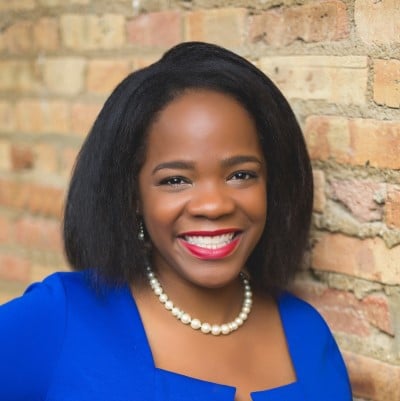I start, knowing it’s going to be hard work, but I commit to it. I’m breathing harder and faster ― and it’s scary and thrilling ― and I am terrified that I might fall down. I am so exhausted that I don’t want to keep going, and I just want to go back to the bottom where it was nice and easy. But I keep going, and I’m always glad I do. In all my travels, the view has never not been worth the work to reach there.
I often think about those climbs when I travel around the country delivering inclusive leadership programs that are different than what you might typically see. I do the C-suite, executive and management trainings, but I also do them for entire organizations because I believe everyone is a leader. Everyone has the power to transform cultures, to change outcomes and to ensure that everyone in their spaces feels included and capable of success.
STORYTELLING + DATA
These leadership trainings go deeper and explore where your bias came from. Thinking about your childhood, your professional life, the culture that you work in today, how did your biases ― race, religion, gender, among many others ― start? Why do they stay? It’s only when we dive into those uncomfortable conversations that we transform real outcomes for real people. So we share our stories, our truths and our fears even though it might feel uncomfortable.
One of my clients called my approach “storytelling + data.” I’m going to give you the data ― here’s where decades of just saying “We care about diversity” and billions of dollars spent on diversity have left us. But I’m also going to give you the stories.
Let me tell you what it’s like to be the lesbian executive who gets asked where her husband works. Or the Hispanic designer who gets admonished, “Where are you really from?” Or the African American lawyer who gets told, “Defendants check in over there.” Or the millions of minorities who are the isolated and lonely “only” in every space they’re in. Data is powerful. Stories are powerful. You combine them both, and you can change the world. And honestly, for many of the leaders I work with, it’s easier to talk about themselves but so much harder to hear the stories of the people who are left out and left behind — because those stories are truth.
From here, we are able to work on figuring out solutions. Recognize that a problem exists, and then commit to solving it. If the challenge of inclusion and equity in the workplace is that mountain, then you need to commit to climbing it. Every one of my program attendees writes a letter to themselves. They date it, seal it, put it an envelope with their name on it, and then hand it to a program coordinator who will give it back to them in three months. And in that letter, they pick three new rules of inclusion that they will commit to following for the next three months.
SET GOALS
Here’s your challenge: These rules are the short versions of some that I share with my clients. Don’t just read them — commit to them. Write two or three down and check back in a few weeks to see how your commitment is going. Solving diversity and inclusion is both deeply institutional and deeply personal, and for the latter, no one can hold you truly accountable except for you.
- Commit to being more mindful in your observations of others, recognizing what stereotypical boxes you’re putting them into.
- Commit to checking your language in your evaluations of direct reports. What words did you use to describe this man when he did this action. What words did you use to describe this woman for doing the exact same thing?
- Commit to checking who you’re mentoring. Challenge yourself if all the people who have mentoring you — and those you’re currently mentoring — look a lot like you.
- Commit yourself to being brave enough to walk into a new employee’s office — someone outside your identity group — and see if they’re free for coffee.
- Commit to listening when someone questions a statement you made or an action you took, rather than giving the defensive response.
- Commit to hosting new events in neighborhoods that you may not have ventured into, but where, as it turns out, a lot of people who work in your company do live.
- Commit to writing more than “She wasn’t the ‘right fit’” on your interview summary and actually dive into what the “right fit” really means.
- Commit to speaking up when someone says the wrong thing and supporting that person if they themselves are committed to making a real change.
- Commit to finding out what it takes for someone to succeed in your department and making it clear to everyone what the real rules of success are.
- Commit to intentional succession planning.
- Commit to diverse interview panels; commit to diverse boards.
- Commit to change.
You are going to climb this mountain. And it’s hard — we are facing centuries of inequity. Why would it be easy to change?
But I see you. I see you breathing harder and faster and it’s scary and it’s thrilling and you are terrified that you might fall down. You’re so exhausted that you don’t want to keep going and you just want to go back to the bottom where it was nice and easy. But you committed to it and you keep going — and you’re glad you do. You keep working and it’s worth it when you get to the top. It’s not just you up there. It’s also the people you brought with you. It’s the lives you have transformed. It’s the legacy of inclusion you are leaving behind.
Let’s go. I’ll see you at the top!


